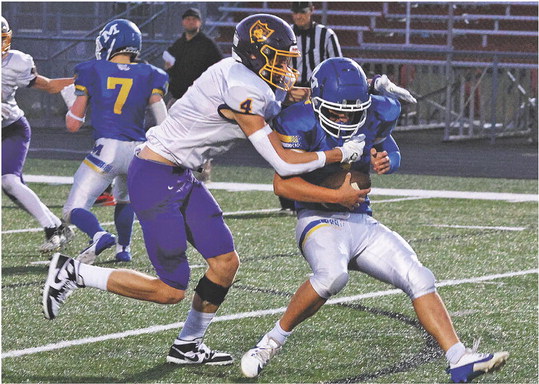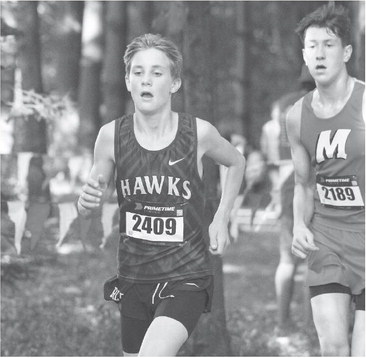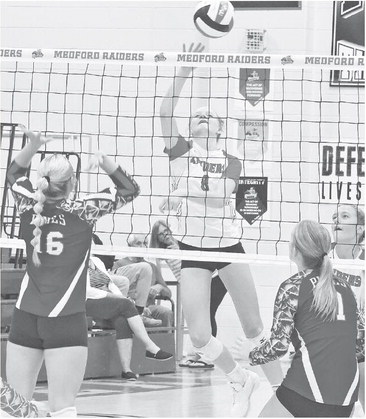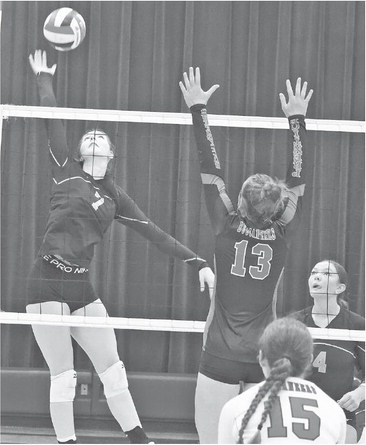Success factor back on WIAA table Wednesday


Matt’s Bleacher Shots
The term “competitive balance” has been used in Wisconsin Interscholastic Athletic Association proceedings for about a decade now and you’re going to be hearing about it again next week.
On April 26, at the WIAA’s annual meeting in Stevens Point, the membership will be voting on the latest attempt to provide that so-called “competitive balance” to high school athletics in Wisconsin. It’s proposed constitutional amendment number one on the agenda and, if approved, would create a new process toward determining divisional placement in post-season competition for all sports except swimming and track and field starting in the 2024-25 school year.
The proposed procedures are outlined in what is called Appendix N, which is available for anyone to view on the WIAA’s website, wiaawi.org, by clicking on the “schools” link at the top of the page and then clicking on “Competitive Balance.”
The new proposal is the result of work that started in August of 2021 with the creation of a 24-member Competitive Balance Ad Hoc Committee, represented by a cross section of administrators and athletic directors from large and small and public and private schools from around the state.
It has two major highlights. One is the return of the success factor, which was proposed by a previous ad hoc committee in 2015 but never made it to a vote at the WIAA meeting after immediately being amended to a private-school multiplier that was overwhelmingly denied. This year’s success factor proposal involves more sports than the initial proposal in 2015 did.
The second highlight would be the creation of a 15-member Classification Committee that would take a case-by-case look at classification changes, appeals and requests before each sport’s tournament assignments are finalized. The committee ideally will consist of an athletic director, superintendent and conference commissioner from each of the WIAA’s five districts. I picture a wild and stressful ride for anyone who takes on a three-year term on this committee, if it happens.
It’s hard to say whether this plan has a better chance at surviving a membership vote than anything that was tried eight and nine years ago when the public vs. private debate bubbled over. It might with its combination of stated rules yet case-by-case flexibility. Plus, there are areas of the state where student-athlete movement through public school open enrollment has made competitive balance more than a public vs. private debate in that time. That may spur a stronger call for change.
There are tweaks depending on the sport, but generally speaking, here is the process.
Third Friday in September enrollment figures will be submitted to the WIAA as always to start preparation for the next year’s tournament planning. That is following by application of the success factor where needed and a process where schools can submit a request as to which division they feel each sport should compete in.
To refresh your memories, the success factor is a point system that could bump annually successful programs up a division. To get bumped up to a higher division a program must accumulate six points or more in a three-year period. The first time period would start by going back to 2021-22. Teams get four points for winning a state title, three for being a state runner-up, two for being a semifinalist and then there are varying one- and two-point totals depending on the sport for levels of sectional success and just appearing at state.
The main criticism of a success factor has been the potential to penalize current groups of athletes for the successes of past groups. Think about it. A group of athletes leads a Division 4 basketball team to back-to-back state titles but then graduates, leaving behind a team that lacks the talent and experience to realistically make a run. But the success factor bumps the team up to Division 3 even though most of the kids now playing have never played varsity before. It happens, especially at smaller schools, where the cupboard for a team goes completely bare just like that. In reality, that team won’t make a tournament run no matter what division it’s in. But is it fair for that group to play up?
That’s where this whole classification request and appeal process gets interesting and maybe gives such a team a chance to stay put.
According to Appendix N, the committee would consider the following factors when reviewing classification requests and these are the factors schools can base requests or appeals on: prior year out-of-building student percentage on rosters or historical movement of student-athletes, socioeconomics of the school’s population, demographics of the school’s population, competitive history and balance, geography, school’s enrollment trend, student participation rate in WIAA-sponsored activities and admission policies of the school concerning student enrollment.
After all of this is done, divisional placements would be finalized and tournament assignments could then be set by the WIAA.
To be clear, schools wouldn’t be required to submit divisional classification requests and I would think most wouldn’t, knowing and accepting where they realistically belong. The WIAA has long given schools the opportunity to move up a division, but no one ever does. You can bet virtually all requests and appeals would be to move down. One wonders how many requests and appeals there would be. You’d hope most would be legitimate requests. But how much research would it take to look at a potential tournament field and say, “maybe we can give ourselves a more advantageous path to state by taking a shot at requesting a change.” Would the success factor deter such antics? How willing would the Classification Committee be to grant requests? It would certainly have to be careful, because you know schools would pay attention to precedent and come up with arguments to try to repeat them.
The other thing to note about the success factor is what happens to the divisional cutlines when schools are bumped up. Just as an example, in this year’s WIAA volleyball tournament, the largest 116 schools were placed in Division 1, the next 116 went into Division 2 and the rest were split evenly between Divisions 3 and 4. So when you start bumping schools up due to the success factor, others have to go down if you’re going to keep this formula. If a team has at least one success factor point, it cannot drop a division. Only schools with no success factor points can be dropped down under this plan.
Interesting is pretty much the best word I can come up with for the proposed amendment. It will be interesting to see how well it’s received on April 26. It will be interesting to see how much work that Classification Committee would have and interesting to see if the changes would ease the perceived problems that exist in WIAA competition now or only heighten complaints if they pass.
I have my doubts that it will pass, but the work done by the Ad Hoc Committee shouldn’t go unappreciated if it doesn’t. This is a complex subject, often debated in this space in the past decade, without a perfect answer. In this part of the state, it’s primarily the public vs. private small-school debate that gets people riled up and I certainly get why that is. There are schools that are similar in enrollment size and not much else when it comes to the population centers students come from and the opportunities they have and it’s tough to reconcile that in a lot of people’s minds.
You can understand the frustration of a school like Rib Lake, where 17 seasons have been ended by private schools in bracketed tournaments the last 10 years, and Gilman, where 15 seasons have been ended by private schools in bracketed tournaments in that same time frame.
Matt Frey is the Sports Editor at The Star News.






